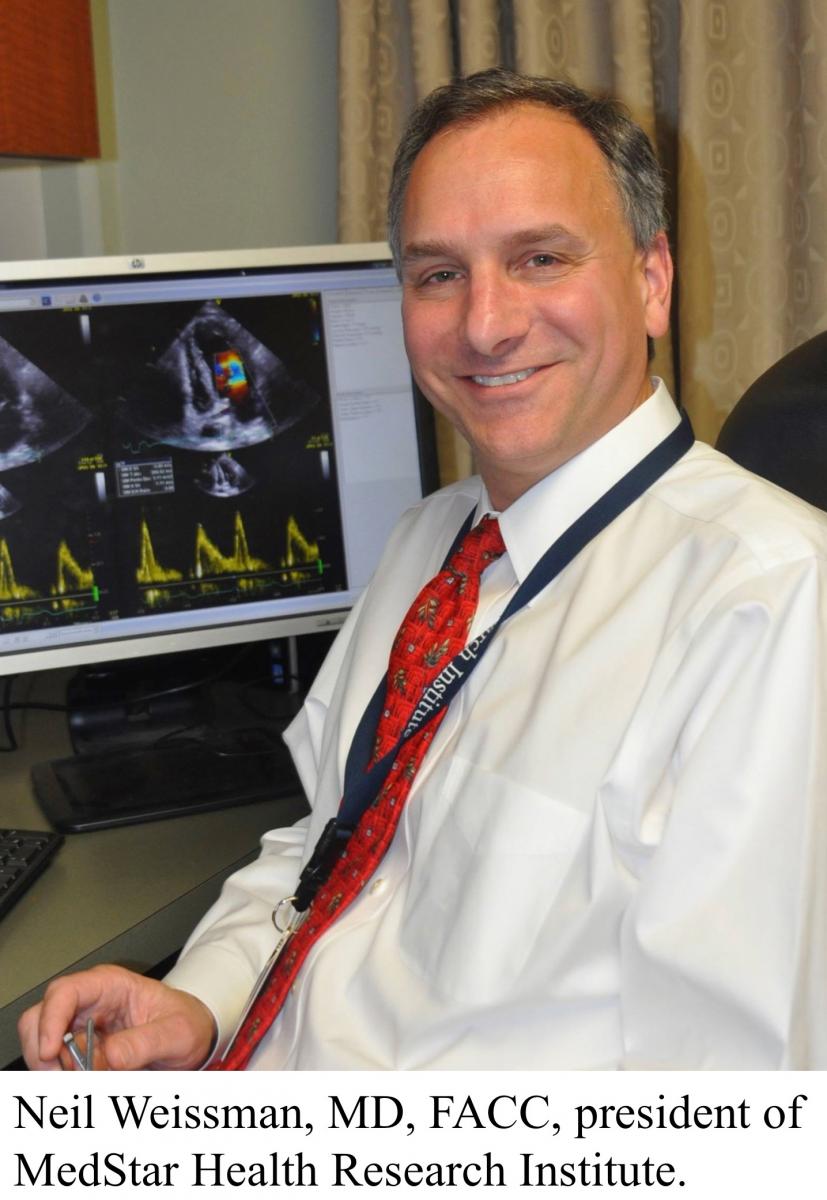Cardiologist Seeks Answers to Heart Disease in Cancer Clinic

Posted in GUMC Stories
FEBRUARY 19, 2015—Cardiologist Ana Barac, MD, PhD, has long looked for reasons that ailing hearts fail. If she knew, it might be possible to identify individuals at risk before they show symptoms and prevent the damage from occurring.
Barac, an assistant professor of medicine at Georgetown University Medical Center, may find her answer in a different field altogether—oncology. It is well known that some chemotherapy treatments, in breast cancer for example, can be cardiotoxic to a subset of patients. Women might go into treatment with a normal heart but emerge with a damaged organ.
Because this toxicity is not universal, Barac feels oncology is the perfect setting to look for markers that predict cardiac risk—and thus could also be used to identify asymptomatic cancer-free individuals who are also at risk for heart issues.
So she did something that clinicians and researchers often talk about, but accomplish much less frequently. Barac crossed disciplines, venturing into the world of oncology, which she freely admits was alien territory.
“Research in cardiology and oncology are two completely different worlds, and the clinical fields operate quite differently as well,” she says. “The challenges are substantial as is the time commitment—you need to be very present in both the cardiology and oncology sides.”
Two Specialties Find Common Ground
With time and patience, Barac managed to carve out a niche.
Already a member of the MedStar Heart & Vascular Institute and medical director of the cardiac rehabilitation program at MedStar Washington Hospital Center, she began spending time with researchers and clinicians from Georgetown Lombardi Comprehensive Cancer Center and the MedStar Washington Cancer Institute. The collaborations that blossomed from these interactions let her to create the cardio-oncology program at MedStar Heart & Vascular Institute.
Seeing the growing interest in cardio-oncology questions, the American College of Cardiology (ACC) started a cardio-oncology working group, which Barac was asked to co-chair. Among other achievements, this group has been invited to organize a full-day interactive program at the 2015 ACC meeting. Barac also co-chairs a small task group charged to explore collaborations between the two largest professional organizations representing cardiologists and oncologists, the ACC and the American Society of Clinical Oncology (ASCO).
Barac went on to secure funding through the Georgetown Howard Universities Center for Clinical and Translational Science (GHUCCTS), a partnership between five universities in the D.C. area, led by Georgetown and Howard Universities, that promotes this very kind of cross-discipline, cross-institutional research.
Barac also worked with her oncology mentor, Claudine Isaacs, MD, who co-directs the breast cancer research program at Georgetown Lombardi, to secure research funds from the cancer center’s Fisher Center for Familial Cancer Research.
Forefront of Cardio-Oncology
The collaborations are paying off. Barac and Isaacs co-authored a paper that was presented at the San Antonio Breast Cancer Symposium in December 2014. Their study showed that anthracycline-based chemotherapy, a common breast cancer treatment, has negligible cardiac toxicity in women whose tumors have BRCA1/2 mutations. Their finding contradicts previous preclinical evidence that such treatment can damage the heart.
“Our study was prompted by evidence from animal studies suggesting that mice with BRCA1/2 mutations in the heart were susceptible to heart damage—treatment with anthracyclines led to reduced cardiac function and heart failure much more frequently in these mice than in those without these mutations,” Barac says. “This was a very relevant question to explore for women with breast cancer who are BRCA1/2 mutation carriers because they often require treatment with anthracyclines.”
Isaacs notes that the results are reassuring for patients with these mutations.
“Although there was no clinical suggestion of an excess risk of heart toxicity in mutation carriers, it is always important to carry out a study to evaluate whether findings in the preclinical setting—in laboratory animals—are actually valid concerns clinically,” Isaacs says.
Another study is looking at whether women being treated with anti-HER2 therapy (such as Herceptin) and anthracycline can continue their chemotherapy even though their heart appears to be at risk.
Both treatments are toxic, but the risk goes away if anti-Her2 therapy is stopped.
“The issue is that cancer is not being treated when the therapy is withdrawn, so we are monitoring patients’ hearts, even those showing stress, while they are being treated,” Barac says. “We want to make it possible for cancer treatment to continue.”
Forging a New Path
Barac’s mentors in both cardiology and oncology are pleased that the collaborations she has nurtured are yielding fruit.
“I feel very fortunate to have Dr. Barac as part of our team,” says Isaacs. “She is an outstanding clinician and is beloved by the patients. She also is a wonderful clinical investigator.”
 Barac’s cardiology mentor, Neil Weissman, MD, FACC, president of MedStar Health Research Institute, echoed Isaacs’ praise.
Barac’s cardiology mentor, Neil Weissman, MD, FACC, president of MedStar Health Research Institute, echoed Isaacs’ praise.
“Dr. Barac emerged very early in her career as an expert in this area. She is applying her knowledge of advanced non-invasive cardiovascular imaging to cancer patients to identify and treat them early, before damage to the heart can occur,” Weissman says.
He adds that Barac was part of a multi-disciplinary group that, in September, published international recommendations on cardiac imaging in cancer patients.
“This puts her and Georgetown-MedStar at the forefront of this type of cross-disciplinary approach.”
Research described in this article was supported by a grant from Georgetown Lombardi’s Fisher Center for Familial Research. Barac is supported by a GHUCCTSA KL2 award, which is funded in whole or in part with federal funds (KL2TR000102 previously KL2RR031974) from the National Institutes of Health, through the Clinical and Translational Science Awards Program (CTSA).
By Renee Twombly
GUMC Communications
